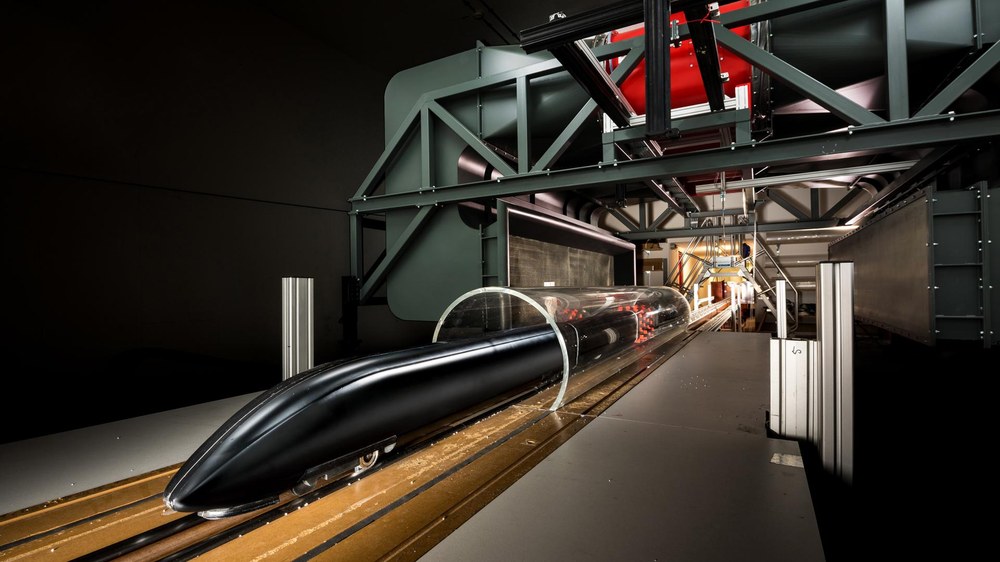Tunnel Simulation Facility Göttingen (TSG)



This testing facility, which is located at the DLR Institute of Aerodynamics and Flow Technology in Göttingen, consists of the Tunnel Simulation Facility (TSG) itself and the Crosswind Test Facility (SWG). Together, they form a one-of-a-kind centre for studying stationary and transient aerodynamics, such as the effects that occur when trains enter tunnels.
Effect of crosswinds and gusts on moving trains and cars
The German Aerospace Center (Deutsches Zentrum für Luft- und Raumfahrt; DLR) Tunnel Simulation Facility (TSG) is a 60-metre-long test track along which models can travel at speeds of up to 100 metres per second. The test facility makes it possible to investigate situations that occur with vehicles, such as entering a tunnel, under realistic conditions. The test models are accelerated using a hydraulically powered catapult together with a special power transmission system that requires no aerodynamically disruptive attachments on the vehicle body. In this way, the underside of the model can be fully representative, allowing the airflow under the vehicle to be investigated. The effect of crosswinds and sudden gusts on moving vehicles can be analysed with the track’s crosswind generator, and the facility also allows the aerodynamically-induced loads on objects close to the track to be studied as vehicles pass. In particular, the pressure waves that are generated when a train enters a tunnel can be analysed at the facility.
The Crosswind Test Facility (SWG) is a wind tunnel that has been specially optimised by the institute in Göttingen for studying the crosswind stability of ground-based vehicles. The tunnel is equipped with a turntable that enables different flow directions to be easily realised, along with a treadmill-like rolling road system for studying the airflow beneath a moving vehicle. Transient incident airflows are produced by a gust generator.
This large-scale facility will make it possible to further improve the overall aerodynamics of rail and road vehicles, thus ensuring safe and energy-efficient operation. Lightweight construction concepts for rail and road vehicles will become increasingly important in reducing energy consumption, posing new challenges in terms of driving stability, including aerodynamics. At the same time, the potential for drag reduction in ground-based vehicles has not yet been fully exploited. Furthering research in these areas will allow this DLR facility to make an important contribution towards the energy transition in the transport sector.
